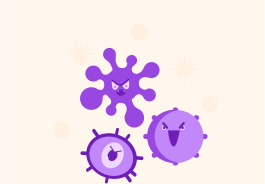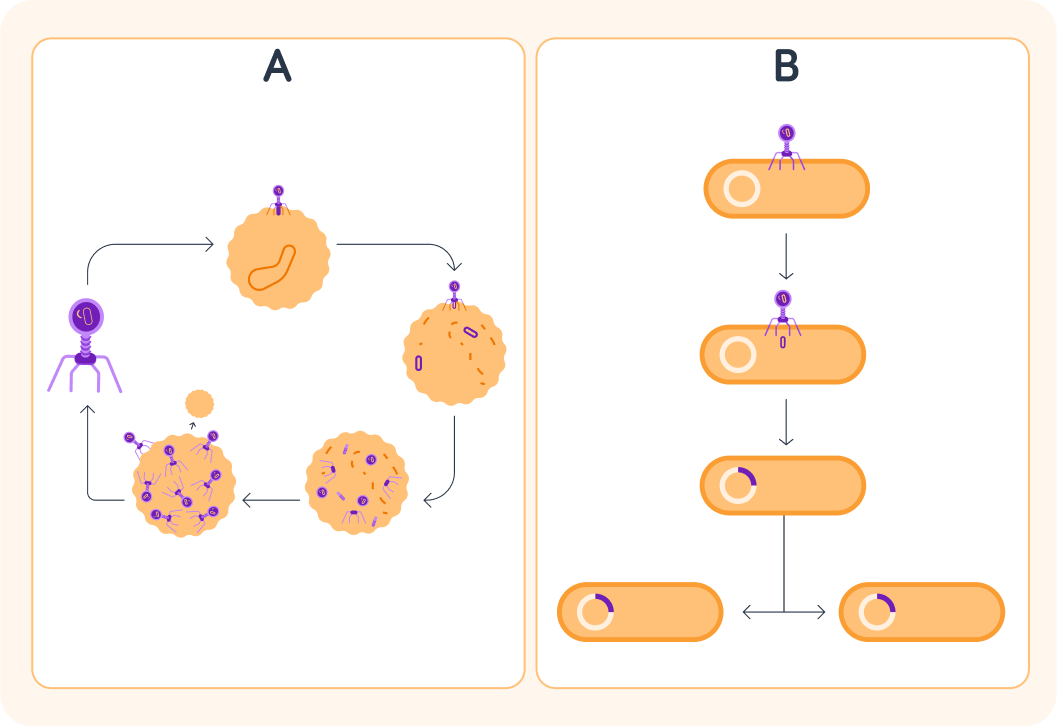YOU ARE LEARNING:
Viruses

Viruses
Viruses are tiny particles - smaller than bacteria. They are not alive, yet can infect every living organism. Viruses reproduce their genetic material through two life cycles - the lytic or lysogenic pathway.
What do you think a virus actually is?

In the picture you see four viruses. What can we say about their shape?
A) They are round. B) They have a cilindrical shape. C) They come in different shapes.


What do we find inside a virus?


What do you think makes up the outside border of a virus?

The size of a virus is 0.02-0.4 micrometers. How does this compare to the size of bacteria?

Viruses are very small. Much smaller even than bacteria! They are particles, which means that they are not living organisms. They are made of a protein coat, and contain RNA or DNA. They come in many shapes and sizes.
Viruses do not contain ribosomes or other cellular structures. How do you think they replicate?

How do viruses use the replication system of cells?

So viruses infect cells, which means they enter cells to use their cellular structures. Which cells do viruses infect? Pick the most correct option.

Viruses are parasites. They infect cells of organisms and replicate inside these cells.
Viruses have life cycles.
There are two types: The lytic life cycle and the lysogenic life cycle.

In the lytic lifecycle, the virus infects a host cell, uses the cell to multiply, and then destroys the host cell. Is the lyric life cycle model A or model B in the picture?


So model B shows the lysogenic lifecycle
The virus infects a cell and integrates its DNA or RNA in the host cell. The host cell replicates including the virus' genetic material.

Which of these steps are included in the lytic cycle?

You can select multiple answers
What is special about the lysogenic cycle compared to the lytic cycle?

There are two life cycles of viruses. In the lytic life cycle, the virus multiplies in the host cell and then kills the host cell. In the lysogenic life cycle, the virus integrates its genetic material into the host cell and when the host cell divides, it also replicates the virus's genetic material.
What happens to a virus after it has replicated and killed the host cell?

How do viruses spread?

You can select multiple answers
Viruses can spread in many different ways. Exactly how it spreads depends on the individual virus. We will look at this in more detail in other lessons.
